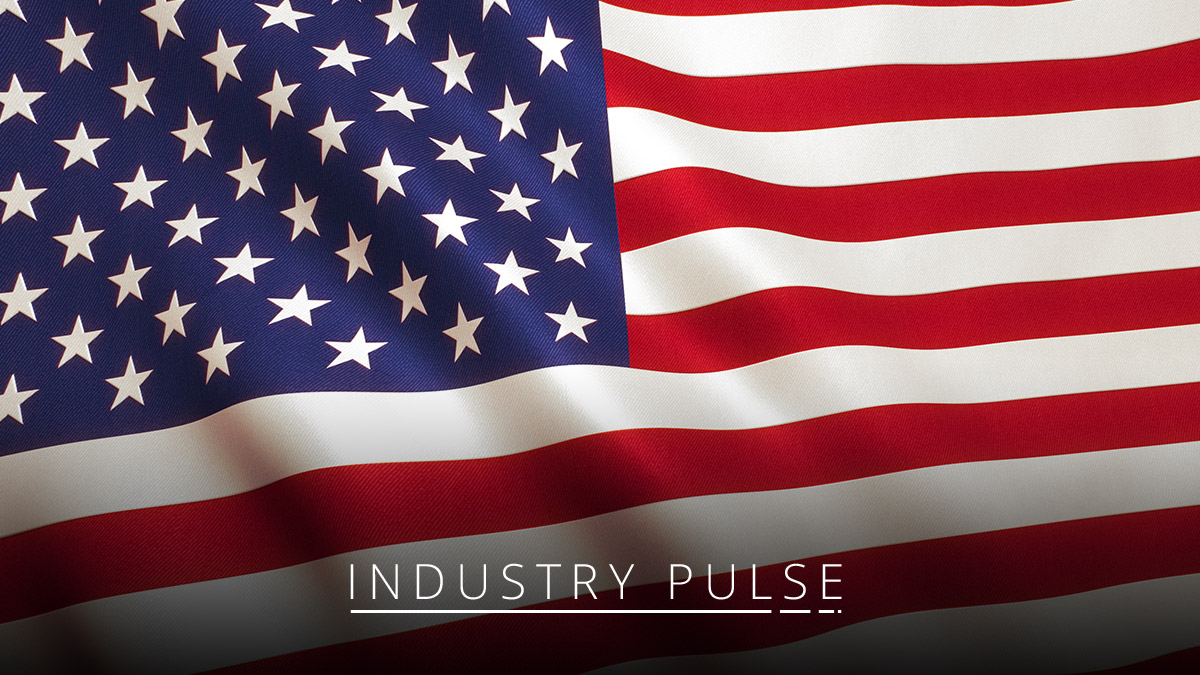5 years of biosimilars in the US: what have we learned?

Biologics have created revolutionary treatment options that have transformed the care journey for hundreds of millions of patients worldwide. In some cases, a painless injection is all that is now needed to mitigate and manage various cancers, rheumatoid arthritis, Crohn’s Disease, and other life-altering illnesses.
With patents on originator biologic medicines beginning to expire in the United States, there’s a growing opportunity for biosimilars to enter the market as alternative therapeutic options at lower prices. In fact, the success of biosimilars in Europe has given the United States a glimpse into how these therapies can increase patient access to the benefits of the most innovative therapies.
This year marks the five-year anniversary since the first biosimilar, Sandoz’s Zarxio, was introduced in the United States. We anticipate that 2020 will be the most pivotal year yet for the United States biosimilar market. Since last November, we have seen six significant biosimilar launches.
This is the first time the US has seen this many biosimilars launch in such a short time frame. Since the launch of Sandoz’s Ziextenzo in late 2019, we now have three biosimilars competing in one category. We expect to break that record by the end of this year when there could be as many as five biosimilars competing with Genentech’s biologic Herceptin, which treats early-stage breast cancer.
If competition continues to increase, the US could potentially decrease direct spending on biologics by $54 billion through 2026.1 The impact of therapeutic brand-name products losing exclusivity is expected to generate savings of $78 billion over the next five years. 2 However, the US will only experience these benefits if more stakeholders begin to support the biosimilar platform.
In fact, it has taken Zarxio five years to achieve a 32 percent market share within the Filgrastim market. 3 In order to increase interest across products, we must create a level playing field for biosimilars and increase acceptance among physicians, payers and other stakeholders. The past five years of challenges and experience have taught us three key lessons that we can use to move the market forward.
Develop a launch strategy in advance
The most successful biosimilar sponsors have planned their launch strategies well before receiving regulatory product approval. They begin working with their commercialisation and distribution partners early in the process to anticipate regulatory and litigation challenges, evaluate how best to differentiate their product, and determine an effective channel strategy.
For example, in the US, manufacturers need to consider patent litigation challenges and their potential effects. What is often referred to as “the patent dance” can delay biosimilar companies in moving forward with critical steps to support future product uptake, such as negotiating with major payers to get ahead of exclusionary formulary decisions. Litigation barriers can also allow other biosimilar manufacturers, that would have otherwise been third or fourth to market, to get ahead of the presumptive biosimilar market leader and launch their products first, which again impacts a company’s strategy.
Additionally, a biosimilar manufacturer must consider the field and patient support it plans to offer alongside its product. Providing physicians assistance with navigating reimbursement and co-pay programmes or additional patient services can be a product differentiator for a second-, third-, or fourth- market entrant.
Each new biosimilar that comes to market must find a way to address a market or stakeholder need that is not currently being met by the other products available. That can range from education to price discounts or different dosing options, but it often includes a unique combination of patient or physician wrap-around services.
Finally, as part of its commercialisation plan, manufacturers and their partners will need to develop an appropriate channel strategy that will provide the greatest access and affordability for patients. This often involves conducting extensive research into a reference product’s strategy and where that product is being distributed. A manufacturers' commercialisation partner will be able to provide insight into different distribution models and ensure the manufacturer places its biosimilar in the appropriate channels.
Prioritise provider education
Biosimilar manufacturers have and need to continue to thoroughly educate all stakeholders (e.g., payers, providers, health systems) on biosimilarity, FDA approval pathway for biosimilars as well as the safety and efficacy of their products well before launch. This will help prepare the market for greater familiarity and comfort by the time the drug is available.
Physicians play a large role in encouraging biosimilar adoption as they are responsible for bringing the best treatment possible to their patients. However, as we’ve seen over the last five years, a lack of physician education has been one of the reasons biosimilar uptake has been slower in the US.
AmerisourceBergen’s Biosimilar Checkup Survey revealed that 74% of physicians who responded reported ‘physician confidence’ as one of the biggest barriers to widespread adoption of biosimilars.4 A poll conducted at ION Solutions’ Large Practice Program National Meeting last fall found that nearly 40 percent of the respondents were unaware of the key factors that make up the FDA approval process for biosimilars.5 Physicians will gain confidence in prescribing these therapies to patients if they understand that the FDA process requires that manufacturers prove that their biosimilar offers the same safety, purity, and potency as the reference products.
Manufacturers can work with a commercialisation partner to build provider confidence through a multichannel, educational-focused approach. A commercialisation partner that works directly with physician practices can help with the education process by providing insight on critical knowledge gaps and connecting manufacturers with key sites of care.
For example, ION Solutions, one of the country’s largest physician services organisationa, helps manufacturers share educational resources on biosimilars with more than half of the United States’ community-based practices.
I’ve seen biosimilar manufacturers achieve the most success by holding live meetings, conferences, and forums for providers. These resources help providers understand the development process, the FDA standards these products must meet, and offers data from clinical studies and patient outcomes that demonstrate the efficacy of these products.
Pursue advocacy efforts
We’ve seen critical legal decisions over the last five years either accelerate or stymie the United States biosimilar market. In the 2017 Amgen v. Sandoz case, the Supreme Court ruled unanimously in favor of Sandoz on one key legal issue impeding biosimilar uptake.
The ruling increased speed-to-market for biosimilars by reducing the market entry barriers that manufacturers once faced. Unfortunately, last year’s ruling on the Amgen v. Sandoz patent litigation case was a setback for the United States’ biosimilar market.
However, the biosimilar market received some positive reinforcement around that same time when UnitedHealthcare announced preferred formulary status for Pfizer’s Retacrit, Amgen’s Mvasi, and Amgen’s Kanjinti.
As we move further into 2020, legislators are clearly starting to recognise the potential value of biosimilars as they pursue new policies. If the Prescription Drug Pricing Reduction Act is passed, it will create incentives for providers to prescribe biosimilars, with one major provision allowing biosimilars to receive a higher reimbursement rate than reference products.
Additionally, the “deemed to be a license” provision slated for March could potentially pave the way for more biosimilars to be developed, enter the same market, compete with one another and gain further clarity around interchangeability.
Supporters of biosimilar channels must get involved in efforts to remove legal hurdles, push for parity formulary status, and establish a clearer path to interchangeability if we are to continue facilitating uptake and increasing patient access to innovative medicines.
There are many resources available to manufacturers and other stakeholders who want to educate themselves on the issues shaping the future of the United States biosimilar market. For example, the Biosimilar Council provides information on regulatory, reimbursement, political and policy issues affecting biosimilars and the FDA’s website offers various biosimilar webinars, courses, presentations and educational resources for manufacturers, patients and providers.
Ultimately, 2020 has the potential to be a pivotal year for the US biosimilar market. It will usher in a record-breaking number of biosimilar launches and first-time legislation which could lead to a groundbreaking level of competition for the market.
We need to reflect on the lessons we’ve learned from the last five years to create the momentum we need for this platform to become as impactful as it can be, to the benefit of patients and the entire system. Supporters of the biosimilar channel need to continue to educate the rest of the market about the value biosimilars can deliver and advocate for an even playing field for these products to enter and succeed in the market.
About the author
Sean McGowan is senior director of biosimilars at AmerisourceBergen.
References
Mulcahy AW, Hlavka JP, Case SR. Biosimilar cost savings in the United States: initial experience and future potential. Rand Health 2018;7(4):3.
- IQVIA Institute. (2019). Medicine Use and Spending in the U.S.: A Review of 2018 and Outlook to 2023. Medicine Use and Spending in the U.S.: A Review of 2018 and Outlook to 2023.
- IQVIA Institute. (2019). Medicine Use and Spending in the U.S.: A Review of 2018 and Outlook to 2023. Medicine Use and Spending in the U.S.: A Review of 2018 and Outlook to 2023.
- (2019). Biosimilars Check Up: Physician perspectives on utilization,cost and barriers to adoption. Biosimilars Check Up: Physician perspectives on utilization,cost and barriers to adoption.
- Patel, K., MD. (2018, September). [Large Physician Practice Biosimilar Poll]. Unpublished raw data













